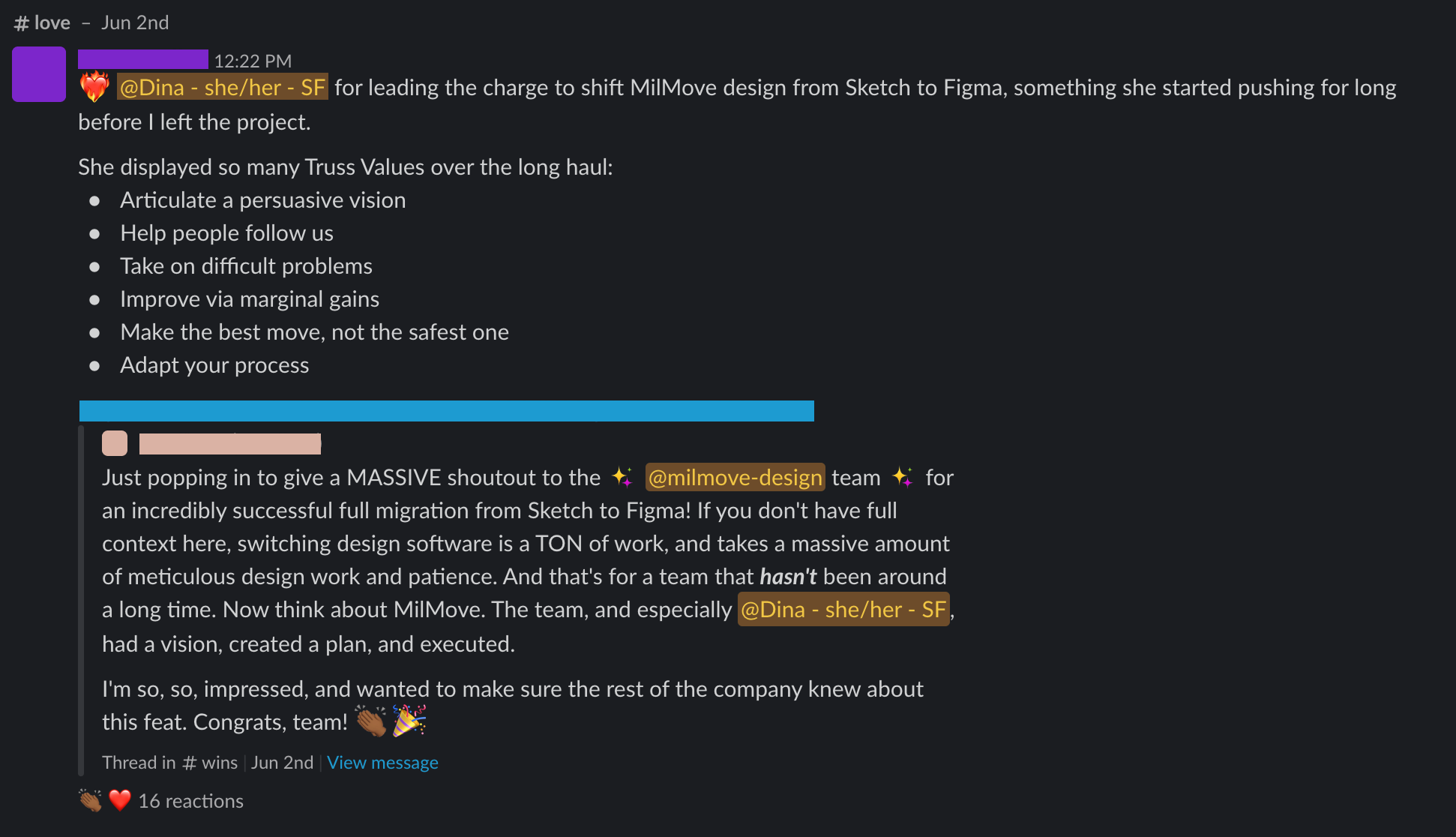
Figma Migration
Migrating design workflows to systems that serve.
Overview
Upon joining my project team at Truss, it became evident that the current design workflow (Sketch, Abstract, Zeplin) was creating more points of friction than speed and solutions. This issue had existed for years, but there had never been enough momentum and buy in to enact real change. I leveraged my newness on the team as an opportunity to approach this like a design problem.
I worked with my team to understand the current landscape, crafted a recommendation, and drafted a migration plan into Figma. I project managed the entire migration while participating in the migration myself and updated and designed new processes and documentation for maintaining, updating, and evolving the design system, product file, and workflows around them.
Solution
The work started in early 2022 and concluded in the summer of 2023. During this time, we successfully migrated one design system and two product files with complex UI and flows. We dramatically changed the way the design team did it’s work by increasing the productivity and speed with which we could deliver our product work to the client. We were able to gain recognition internally for this massive undertaking and achievement and saved the company, and ultimately our clients, time and money.
Research & Synthesis
To start, I created an asynchronous activity for the team to complete to help me get a deeper look at our design tooling. Making it asynchronous was a conscious choice as I wanted to show that this work could happen alongside product work without it affecting the quality of our client deliverables.
The results were illuminating: it was clear that Sketch and Abstract were huge pain points but I also learned that we didn’t have strong workflows and processes around managing our copy and that there was general confusion around documentation and governance practices.
After synthesizing this data, I created a report to share with the team to illustrate findings, my method for rating possible solutions, and ultimately some recommendation options for us to choose from. I also made sure to highlight secondary learnings so that we could add them to our backlog as issues to explore as we had time.
Plan
With the design team’s buy in that Figma was the best solution, I created a comprehensive migration plan to get us going. This included
An audit of all our design files and my point of view on the best way to migrate them
The best way to sequence the work
Epics and stories for all the work to be done
Updates to existing team processes and suggestions of new workflows and processes
A training for the team on how to use Figma
The best way to deprecate our old tools and documentation that would need to be updated
With a strong plan in place I was able to secure the projects support in moving forward with this work.
Operationalize
Finally, I looked at the best ways for implementing this plan by building on existing workflows and processes so that we could show the client that we could deliver on our product work as well as implement this project. I adapted the following in support of maintaining momentum for the work:
Creating a new slack channel to house all discussion about the work so designers could have one place to go with questions, requests for reviews, etc and anyone else could follow along as they liked
Creating a regular office hour so designers could have real time support on anything they needed when doing the migration work
Giving regular updates on the progress of the migration work at team meetings
Celebrating wins and giving status updates at project wide meetings
Example of a new process in the new slack channel we created.
At this point, after having done a lot of leg work to show the client the work of this project and how it would slot in around product work, they didn’t take any issue with it when we formally presented and informed them of the work.
Outcome & Learnings
The hardest part isn’t starting, it’s maintaining momentum - operationalizing and baking into existing (or creating new) processes and rituals helps keep things moving.
Showing by doing is what ultimately laid the ground work to get by in from the client - all the research, planning, and implementing went a long way in showing the need and how we’d get to the finish line.
Celebrating regularly, even the small things, and recognizing when to slow down or adapt helped get us there in the end.





